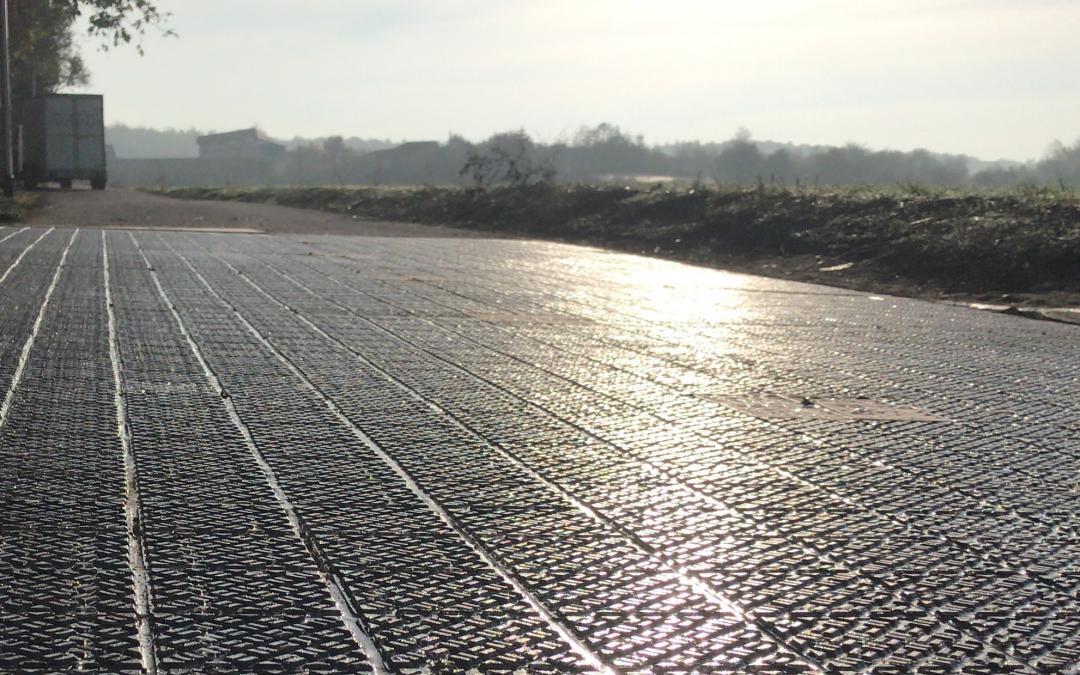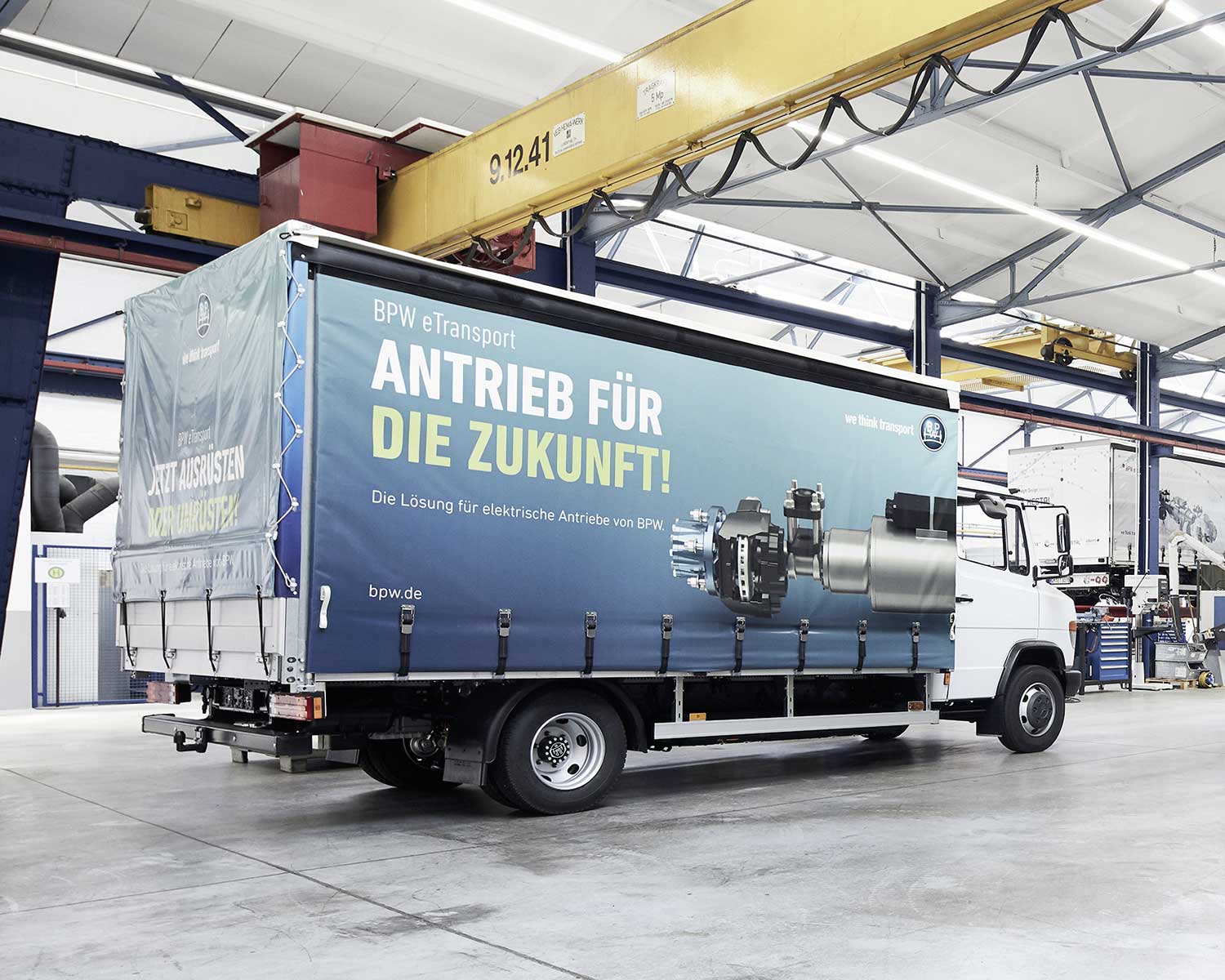Reading time approx. 3 minutes
Text: Juliane Gringer
Photos: Solmove GmbH
The Berlin-based start-up Solmove builds solar modules that can be installed on roads – thus transforming asphalt into new spaces for alternative energy usage and green energy provision.
Electric drives in cars and commercial vehicles are among the most important concepts for environmentally friendly mobility. However, the vehicles need to be charged at fixed charging points – which means that they are stationary and cannot be used during this time. The idea from Solmove seems to be as innovative as it is logical: the Berlin-based start-up is developing intelligent solar roads that supply electric cars with sustainable power while they are on the move. It is anticipated that the solar roads will be capable of even more in future – supplying electric cars not just with power but also with information, and transforming the road network into a data network.
Solar roads supply energy
Donald Müller-Judex, CEO of Solmove GmbH
Solmove builds panels with an area of 1.4 square metres that are laid on the road surface. The panels are based on a photovoltaic element that is covered with 140 highly stable glass squares the size of a beer mat. Their shape and size provides the flexibility needed for the panels to adapt to the inherent curve of the road. The glass directs the sunlight perfectly onto the photovoltaic layer. The specially shaped profile of the glass sections also makes them non-slip and enables them to virtually clean themselves. They are easy to install with their plug-in system, reduce road noise and can be used for at least 20 years. Inductive charging for electric vehicles during travel is also an ambition for the future. For now, the power that is generated – up to 100 kilowatt hours per module each year – is mainly fed into the grid.
Donald Müller-Judex, CEO of Solmove GmbH, came up with the idea for solar roads around ten years ago when he was looking for roof space for solar modules in the Allgäu region, where he was living at the time: ‘I couldn’t find any free roofs – they were all being used,’ the qualified mechanical engineer remembers. ‘So I started wondering whether you could use roads for this.’ Müller-Judex describes himself as an inventive spirit: ‘When I see a problem, I look for a solution.’
He founded Solmove in 2014. He started out on his own and then found support from partners and financial backers. The solar road modules are produced partly in collaboration with the Fraunhofer Institute for Solar Energy Systems ISE in Freiburg and the Institute of Highway Engineering at RWTH Aachen University.
Test section: solar cycle path in Cologne
A test section was opened in Erftstadt near Cologne in November 2018. For now it is ‘just’ a 90-metre cycle path, but it is the very first solar cycle path in Germany and is intended to aid the further development of the modules. As well as generating power, the path also offers greater safety as the tiles can be heated in winter and so prevent black ice. ‘The path isn’t just used by cyclists – skateboarders, pedestrians, children, dogs and even the occasional car use it too,’ says Müller-Judex. ‘We have even just had a truck drive on it to test the stability and this went very well.’ Nevertheless, he envisages that the panels will be used on routes with relatively little traffic for now, for example in residential areas. ‘First of all, the loads involved on motorways are extreme,’ he explains. ‘Aside from that, there is 50 times as much space on local roads as there is on large intercity roads such as motorways and national highways. Areas that get lots of sunshine and little traffic are ideal for us.’
Helping the transition to low-carbon energy
When he approached local authorities with his product, Müller-Judex at first met ‘open mouths’, but then found them willing to listen. He explains: ‘People realised that this is not just an obsessive idea but actually a real opportunity to make a significant contribution to the transition to low-carbon energy. Achieving 100% of energy from renewable sources is a good, important and valuable target. I am convinced that we can reach this target with solar roads, without having to transform meadows into desolate fields of solar panels.’
Using roads to generate solar power is an obvious solution for Müller-Judex: ‘Many parts of the world don’t always have roofs available or are already using all of their roof space. Roads, on the other hand, offer a gigantic amount of space that can be used to optimum effect: in Germany alone, we have a potential 1.2 billion square metres available. And unlike with conventional wind and solar power generation, there is no need to encroach on natural spaces as we are using areas that already exist.’
Solar roads mean no need for winter road clearing
Finding support
More test systems are set to enter use in 2019. ‘From 2020, we will then probably have a product that can be purchased through authorised retailers and online shops,’ says Müller-Judex. ‘Private users will then be able to have a look, buy them and install them too. For example, they can convert their driveways so that they not only generate power but also thaw snow and ice in winter.’ This is because the modules can be heated using a special circuit – meaning that homeowners no longer need to shovel away the snow. ‘A local authority could avoid the need to clear their roads in winter with the modules and thus also save costs. Plus, there would be no delay for clearing – the routes would be clear for commuters promptly.’
The Solmove team is also working on the ability to display road signs on the road surface. This would enable dynamic traffic management. Müller-Judex can envisage sensors being integrated that, for example, measure the weight of trucks and can issue warnings before bridges are overloaded. ‘With the modules, we are offering a surface that can supply power as well as data. There are definitely many more potential applications that we cannot even foresee yet.’








